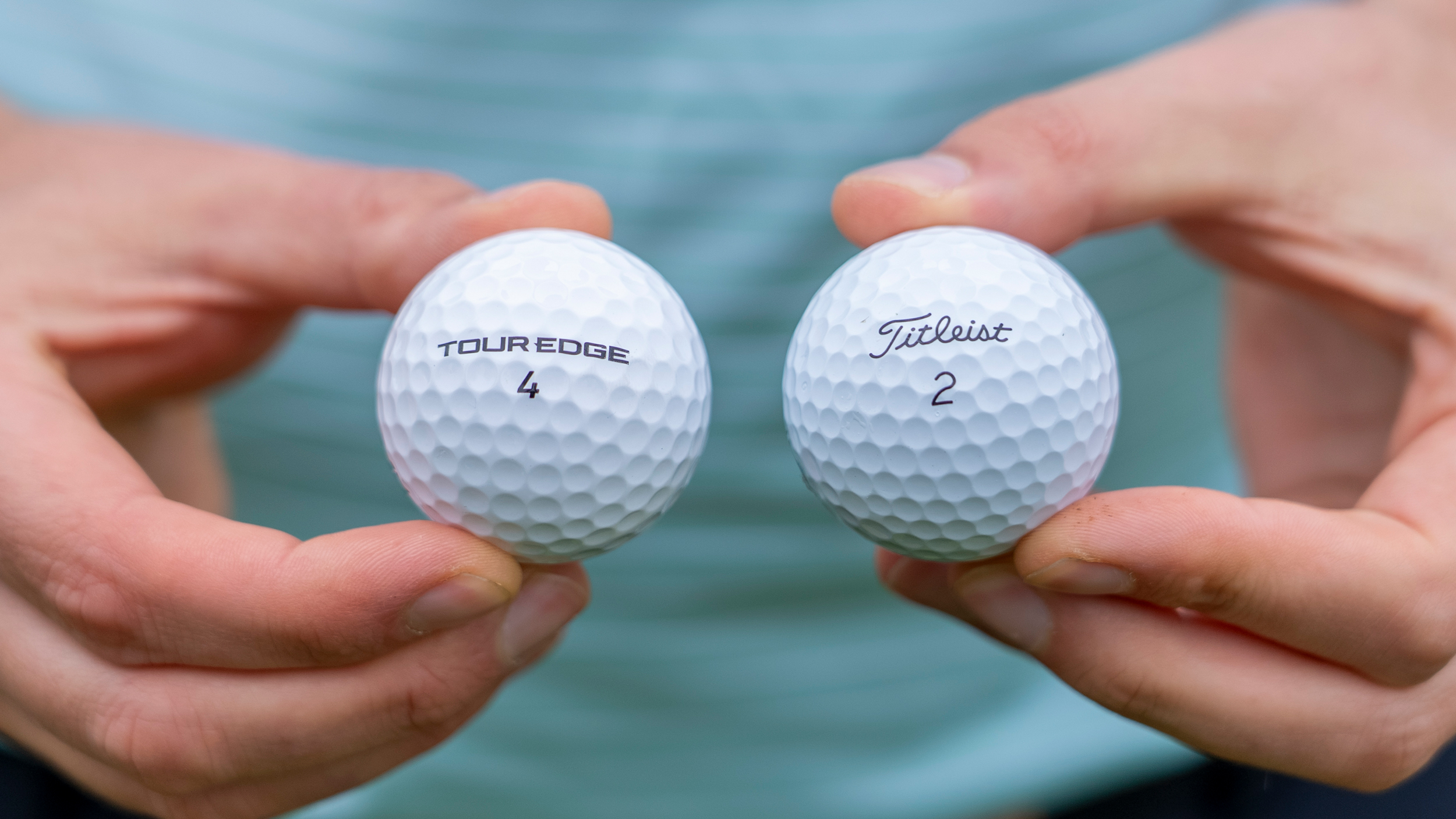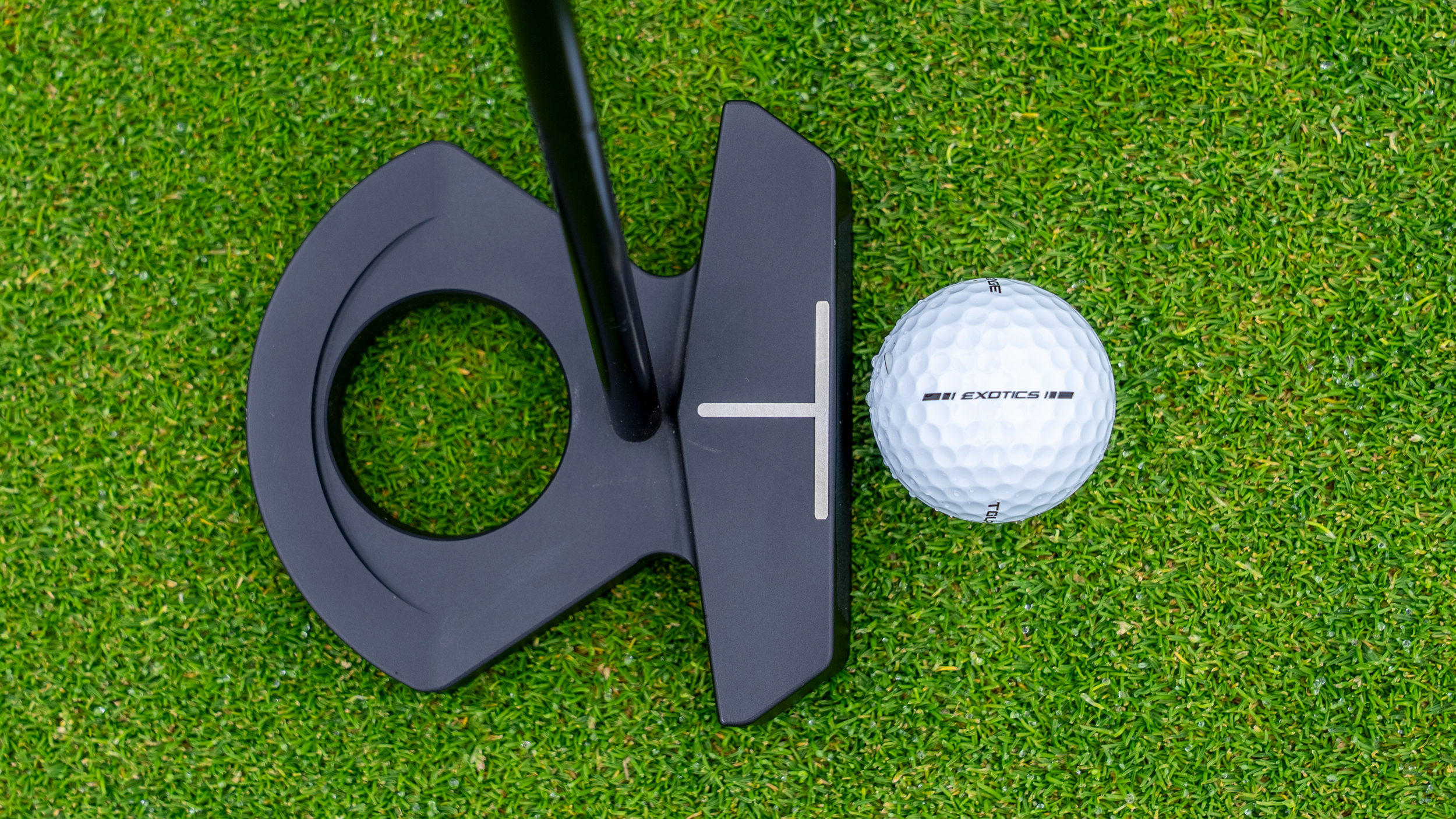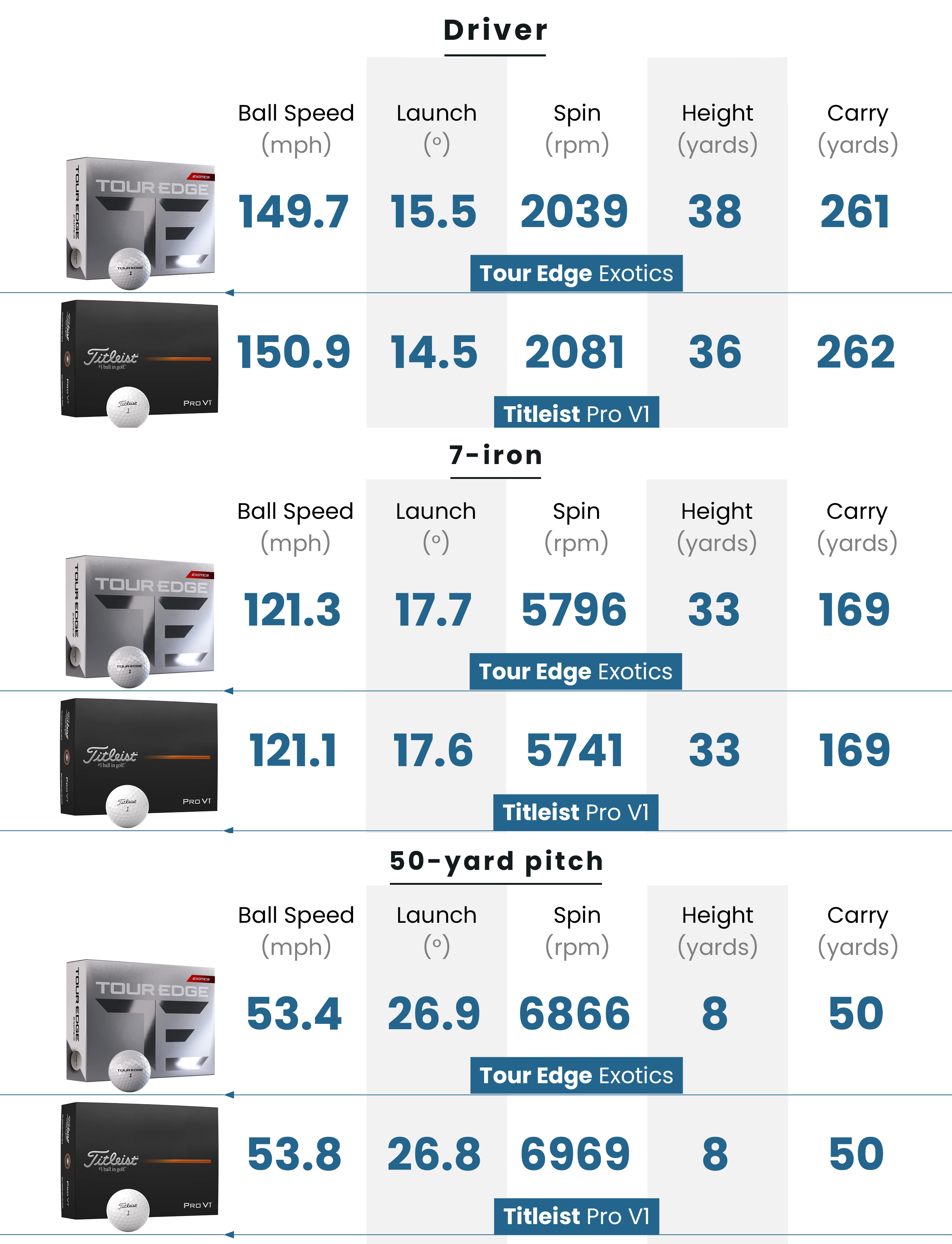Can The New $40 Tour Edge Ball Compete With The Pro V1? We Found Out
Tour Edge is making some big claims about its new Exotics golf ball, something Joel Tadman was keen to put to the test

The Tour Edge Exotics represents an impressive debut in the golf ball market. It excelled tee-to-green, producing solid numbers that compared well with the market leader, making it a compelling option for golfers seeking a premium ball at a more affordable price point.
-
+
Impressive spin control
-
+
Excellent iron performance
-
+
Soft, responsive feel
-
-
Struggled into the wind
Why you can trust Golf Monthly

Tour Edge makes some mightily impressive golf clubs in recent years, notably the Exotics C725 driver and Exotics C725 irons, catering for a variety of player types by offering premium performance at a slightly more palatable price.
Now, it has taken this golf know-how and applied it to balls for the first time. The company claims its new Exotics ball produces ‘incredible numbers’, something I was very keen to put to the test.
WATCH: Joel Tadman tests the performance of the Tour Edge Exotics ball
In terms of technology, the Tour Edge Exotics ball is a three piece design with a urethane cover, much like that of the market leading Titleist Pro V1 in terms of construction. It boasts a high speed KinetiCore said to deliver speed, distance and stability in the wind while the fast, soft ionomer mantle layer helps with accuracy and control on approach shots. For short game spin, there’s the cast urethane cover.
On first inspection out of the box, the Tour Edge Exotics looks well made. It has a slightly duller finish than the bright white Pro V1 and the dimples don’t appear to be as tightly packed together. This explains the 318 dimple pattern total versus the Pro V1’s 388.

On the Exotics there’s also a visible seam around the golf where the two halves have been joined, whereas on most of the best premium balls it is more seamless (pun intended). This used to affect performance back in the day but the USGA’s symmetry test now ensures every ball performs similarly in different orientations.
The ball also sports Tour Edge’s new modern logo, which looks smart, and the sidestamp should be effective enough for golfers that use a line on their ball to help them on the greens.
Subscribe to the Golf Monthly newsletter to stay up to date with all the latest tour news, equipment news, reviews, head-to-heads and buyer’s guides from our team of experienced experts.

As I clipped a few chips away it was noticeable how soft the Exotics ball felt, it didn’t sound as clicky as the Pro V1, although the difference was fairly subtle. Overall the Tour Edge probably had a slightly higher flight on chip and pitches but the level of grab on the second bounce was comparable.
I then took the ball indoors and gathered data on the Foresight Sports GCQuad launch monitor, hitting a 50-yard pitch shot, 7-iron and driver with each. The data painted a similar picture in that the numbers were very comparable, almost identical in fact. The Pro V1 provided a touch more spin with a wedge and a little more speed and distance with the driver, but we’re talking minimal differences.

But to properly assess the Tour Edge ball, I needed to hit it out on the course. So I hit three drives with the Exotics and three with the Titleist Pro V1. This is important because photometric launch monitors use algorithms to calculate distance and don’t factor in the effect of dimple design and aerodynamics, which ball companies rightly place a lot of value in.
Having hit some well-struck drives with each, it appeared that the Pro V1 started to separate a little more. While I probably struck one of the shots with the Titleist slightly better, to see it finish 14 yards further than my best hit with the Tour Edge was a surprise. I’m speculating of course, but it appeared the Pro V1 did a better job of cutting through the slight head wind and maximising total distance.

But in summary, the Tour Edge Exotics ball certainly held its own and when you consider it comes in at just $39.99 per dozen compared to the $55 of the Pro V1, you could argue there’s better value to be had, especially for golfers that prioritise performance into and around the greens as well as a soft feel.
More and more companies are making competitive products at the premium end of the ball market that are genuinely comparable to the established choices. We’ve seen it with balls like the Mizuno Pro X, the Snell Prime 3.0, the Vice Pro Plus and even the Kirkland Signature to a degree, and Tour Edge is another ball that performs well tee-to-green for a more than reasonable price.

Joel has worked in the golf industry for over 15 years covering both instruction and more recently equipment. He now oversees all equipment and video content at Golf Monthly, managing a team of talented and passionate writers and presenters in delivering the most thorough and accurate reviews, buying advice, comparisons and deals to help the reader or viewer find exactly what they are looking for.
One of his career highlights came when covering the 2012 Masters he got to play the sacred Augusta National course on the Monday after the tournament concluded, shooting a respectable 86 with just one par and four birdies. To date, his best ever round of golf is a 5-under 67 back in 2011. He currently plays his golf at Burghley Park Golf Club in Stamford, Lincs, with a handicap index of 3.1.
Joel's current What's In The Bag?
Driver: Titleist GT3, 9°, Fujikura Ventus Black 6 S shaft.
Fairway wood: Titleist TSR3, 15°
Hybrid: Titleist TSi2, 18°
Irons: Titleist T150, 4-PW
Wedges: Titleist Vokey SM10, 50°, 54° and 58°
Putter: LAB Golf DF3
Ball: 2025 Titleist Pro V1x
You must confirm your public display name before commenting
Please logout and then login again, you will then be prompted to enter your display name.